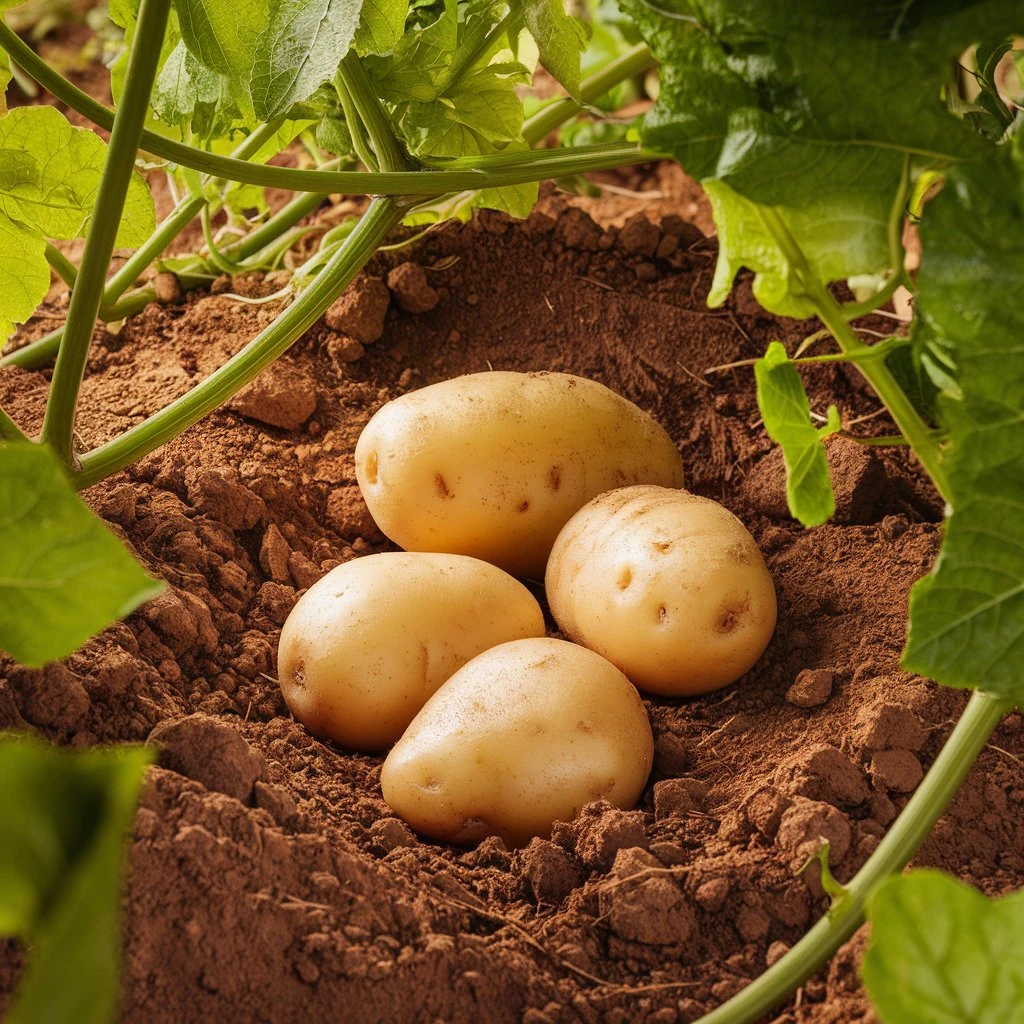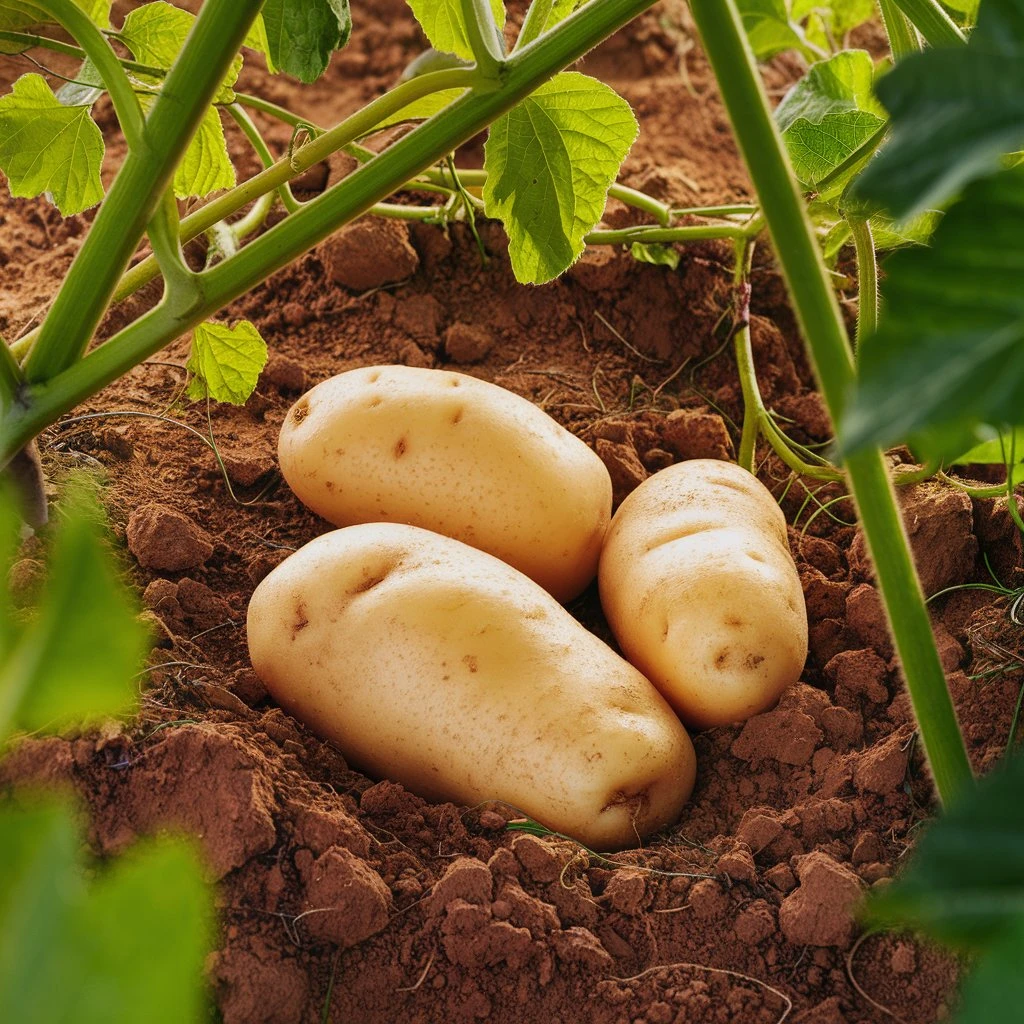
Nutritional Benefits of White Sweet Potatoes
White sweet potatoes are more than just a delicious and versatile ingredient; they’re packed with essential nutritional benefits that can make a significant impact on overall health. Though often overshadowed by their orange counterparts, white sweet potatoes offer a unique profile of vitamins, minerals, and antioxidants that contribute to wellness.
One standout feature of white sweet potatoes is their high fiber content. Unlike regular white potatoes, these tubers provide both soluble and insoluble fiber, which is essential for digestive health. Soluble fiber helps regulate blood sugar by slowing down digestion, making white sweet potatoes a beneficial choice for those looking to maintain steady energy levels throughout the day. Insoluble fiber, on the other hand, supports bowel health and keeps the digestive tract functioning optimally.
Additionally, white sweet potatoes are an impressive source of Vitamin C, an antioxidant known for its role in supporting immune health and cellular repair. Just one serving can provide a substantial percentage of the daily recommended intake, making these potatoes an ideal food for those wanting to strengthen their immune defenses. Vitamin C also promotes collagen production, which is vital for skin health and elasticity.
Another key nutritional benefit of white sweet potatoes lies in their potassium content. Potassium is an essential mineral that helps regulate blood pressure, supports cardiovascular function, and assists with muscle contractions. Including potassium-rich foods like white sweet tubers in the diet can help balance sodium levels and reduce the risk of hypertension, an increasingly common health issue.
For those focusing on heart health and disease prevention, white sweet potatoes offer additional antioxidant properties that combat oxidative stress. This helps protect cells from damage by free radicals, potentially lowering the risk of chronic illnesses and even contributing to anti-aging effects. While they may not contain as much beta-carotene as orange sweet tubers, white sweet potatoes still provide a variety of antioxidant compounds that support overall cellular health.
Lastly, white sweet potatoes are relatively low in calories but dense in nutrients, making them ideal for those aiming to maintain or lose weight. Their slow-release carbohydrates provide a steady energy source, helping to reduce cravings and keeping you satisfied longer.
Incorporating white sweet tubers into your meals not only adds flavor but also delivers a variety of nutritional benefits. Whether roasted, mashed, or baked, they are a wholesome choice that can support immune function, heart health, and digestive wellness.
Flavor and Culinary Uses
White sweet potatoes offer a unique culinary experience, distinct from their orange counterparts. Their subtle flavor has a more refined sweetness, with earthy and nutty undertones that lend themselves to a wide range of culinary uses. Unlike traditional sweet tubers, the white variety balances starchiness with sweetness, making them a versatile ingredient in both savory and sweet dishes.
When roasted, white sweet potatoes achieve a light caramelization that brings out their natural sugars, enhancing their mild, creamy flavor. Roasting them at high heat develops a rich golden-brown crust on the outside while keeping the inside soft and moist. Adding herbs like rosemary, thyme, or sage elevates this dish, as the earthiness of the herbs complements the white sweet potato’s underlying flavors. A drizzle of olive oil and a sprinkle of sea salt before roasting can bring out a delightful depth that pairs well with roasted meats or as a robust side on its own.
For a softer preparation, white sweet potatoes make an excellent base for mashes and purées. Their mild flavor pairs well with creamy ingredients, making them a luxurious alternative to regular potatoes. To create a mash, steam or boil white sweet tubers until tender, then blend them with butter, cream, or even a dollop of crème fraîche for added richness. Nutmeg, garlic, or a touch of truffle oil can accentuate the natural flavors, creating a mashed dish that’s smooth, subtly sweet, and deeply satisfying. This side dish complements roast meats, seafood, or hearty autumn vegetable meals.
In baked dishes, white sweet potatoes shine in gratins, casseroles, and layered bakes. Their starchy consistency holds up well in the oven, providing structure without becoming mushy. For a savory gratin, try thinly slicing white sweet potatoes and layering them with Gruyère cheese, cream, and a hint of garlic. This preparation yields a creamy, cheesy dish with a crispy top layer that adds texture to each bite. For an autumn twist, combine white sweet tubers with squash or pumpkin in a gratin, using cinnamon and a sprinkle of brown sugar to create a subtly sweet, seasonal side dish.
The culinary uses of white sweet potatoes extend beyond traditional side dishes. They work well in soups and stews, where their creamy texture enhances the broth without overpowering the dish. For a hearty winter soup, pair puréed whitesweet tubers with leeks, garlic, and a dash of smoked paprika for a complex, warming flavor profile. Adding coconut milk or ginger to the soup can bring out a hint of sweetness that works well with spices, such as turmeric or cumin, offering an intriguing contrast between earthy and sweet flavors.
For more adventurous culinary uses, white sweet potatoes can be incorporated into desserts. Their mild flavor works particularly well in pies, cakes, and even custards. To make a simple white sweet potato pie, purée them with eggs, sugar, and warm spices like cinnamon, nutmeg, and cloves. The filling will have a creamy, smooth texture that’s lighter than traditional pumpkin or sweet potato pies. Alternatively, adding mashed white sweet potatoes to cake batter can add moistness and a subtle depth of flavor to any dessert, from brownies to pound cakes.
Frying brings out yet another dimension in white sweet potatoes. When thinly sliced and fried, they transform into crispy chips or fries, providing a slightly sweet alternative to traditional potato snacks. Simply slice the white sweet tubers thinly, season with salt and perhaps a dash of cayenne pepper for heat, and fry until golden. These chips are ideal as a snack or a unique side dish, offering a satisfying crunch with a hint of sweetness that appeals to both children and adults.
When it comes to salads, white sweet potatoes can add both texture and flavor. Roasted cubes can be tossed into grain-based salads, adding a mild sweetness that complements bitter greens, nuts, and citrus-based dressings. Combining white sweet tubers with ingredients like quinoa, arugula, cranberries, and walnuts creates a balanced, nutrient-rich salad that’s satisfying and vibrant. Lightly seasoned, roasted whitesweet tubers also make an excellent topping for leafy green salads, especially with a balsamic or tahini dressing that enhances their earthy qualities.
From savory sides to unexpected desserts, the culinary uses for white sweet tubers are nearly endless. Their subtle flavor and adaptable texture make them a standout ingredient in any dish, while their mild sweetness allows them to pair well with a vast array of seasonings and other ingredients. Whether roasted, mashed, baked, or even incorporated into sweets, white sweet potatoes can bring a sophisticated twist to the table.
How to Select, Store, and Prepare White Sweet Potatoes
White sweet potatoes are a versatile and nutritious addition to any kitchen, offering a delicate balance of starchy texture and subtle sweetness. Their pale, creamy flesh and mild flavor make them an excellent ingredient in various dishes, from comforting side dishes to hearty mains. For optimal results, it’s essential to know how to properly select, store, and prepare white sweet tubers to preserve their quality, flavor, and nutritional benefits. Here’s a comprehensive guide to ensure you get the most out of these unique tubers.
Selecting the Best White Sweet Potatoes
Choosing the right white sweet potatoes is the first step toward a successful culinary experience. These potatoes, unlike their orange counterparts, are generally less sweet and have a more nuanced flavor profile. When shopping for the perfect batch, look for white sweet potatoes that are firm to the touch, without soft spots, blemishes, or sprouting.
The skin should be relatively smooth and free of wrinkles or cracks, which can indicate that the potato is either too old or has been stored improperly. A rough or wrinkled surface can also mean the potato is drying out, leading to a loss of both flavor and moisture. The ideal white sweet potato will be heavy for its size, indicating that it’s still fresh and retains moisture inside.
Another tip for selecting the best white sweet tubers is to choose potatoes of similar size if you plan to cook them all at once. This helps ensure even cooking, as smaller potatoes may soften too quickly while larger ones remain undercooked. If you have access to a farmers’ market, buying from local farmers can be a great option, as these potatoes are likely to be fresher and may even be organically grown, free from synthetic pesticides.
Storing White Sweet Potatoes Properly
Proper storage is crucial for maintaining the freshness and quality of white sweet potatoes. While they don’t have the same storage requirements as regular potatoes, they still need certain conditions to stay at their best. White sweet tubers should be kept in a cool, dry, and dark place. Ideal storage locations include a pantry, cellar, or cupboard away from direct sunlight.
Avoid refrigerating white sweet potatoes, as temperatures below 55°F can alter their texture and flavor, causing them to become hard in the center and less pleasant to eat. Cold storage can also increase the likelihood of moisture buildup, which can lead to mold or rot. A well-ventilated area with moderate humidity is best, as it allows air circulation around the potatoes while keeping them from drying out.
When storing white sweet tubers, keep them away from other produce, particularly fruits like apples and bananas, which emit ethylene gas that can accelerate the ripening and spoiling process. If stored under ideal conditions, white sweet tubers can last for up to two weeks. However, if you notice any signs of spoilage, such as soft spots or discoloration, it’s best to use them quickly or discard them.
Preparing White Sweet Potatoes for Cooking
Once you’ve chosen and stored your white sweet potatoes correctly, the next step is to prepare them for cooking. These potatoes can be prepared in numerous ways, each method bringing out different aspects of their flavor and texture. Here are some essential tips to get the best results:
- Washing and Peeling: Start by giving your white sweet tubers a thorough wash under cold water. Use a brush to scrub away any dirt or debris on the skin. While the skin is edible and contains nutrients, it may have a slightly tougher texture than the flesh. You can leave the skin on for added fiber or peel it off if you prefer a smoother texture.
- Cutting and Slicing: Depending on your recipe, you may want to dice, slice, or cube the potatoes. White sweet potatoes are denser than regular potatoes, so be sure to use a sharp knife to make clean cuts. Consistency in size is important, as it ensures even cooking. If you plan to roast or bake the potatoes, aim for slices or cubes that are around half an inch thick. Thicker pieces take longer to cook and may have a softer interior with a crispy exterior when roasted.
- Soaking: If you want to make fries or roasted white sweet potatoes with a crispier texture, try soaking them in cold water for about 30 minutes after cutting. This removes some of the excess starch and prevents them from becoming too soft during cooking. Be sure to pat them dry thoroughly before cooking to avoid excess moisture.
- Seasoning: Although white sweet tubers have a naturally mild flavor, they absorb seasonings well, making them an ideal base for various spices and herbs. A sprinkle of salt, pepper, and a dash of olive oil enhances their natural taste, but you can also get creative with other spices. Try adding paprika, garlic powder, or a hint of cumin for a savory twist. For a sweet option, cinnamon, nutmeg, and a drizzle of honey work wonderfully.
- There are several popular methods for cooking white sweet potatoes, each offering a unique texture and flavor.
-
Cooking Techniques for White Sweet Potatoes
- Roasting: Roasting is a popular way to prepare white sweet tubers, as it brings out their natural sweetness and gives them a delightful caramelized edge. Spread the potatoes on a baking sheet, toss them with olive oil and seasonings, and roast at 400°F (200°C) for 25-35 minutes, flipping halfway through for even browning. This method results in a crispy exterior and tender interior, making roasted white sweet potatoes perfect as a side dish or salad topping.
- Boiling: Boiling is a quick and straightforward method that preserves the potatoes’ moisture, making them ideal for mashes or purees. Place cubed white sweet potatoes in a pot of salted water, bring to a boil, and cook until they are fork-tender, typically 15-20 minutes. Drain and use immediately in recipes or as a base for a creamy mashed potato dish.
- Baking: Baking whole white sweet potatoes allows for a soft and fluffy texture, ideal for stuffed potatoes or as a standalone side. Pierce each potato several times with a fork, wrap in foil if desired, and bake at 375°F (190°C) for about 45-60 minutes, depending on size. Once baked, they can be sliced open and topped with butter, herbs, or any toppings you enjoy.
- Sautéing: Sautéing cubed white sweet potatoes in a skillet with a bit of oil creates a crispy exterior while maintaining a tender center. Cook on medium-high heat for approximately 10 to 15 minutes, stirring from time to time. This technique works well in hash dishes or as a breakfast side with eggs.
- Mashing: To make a creamy mash, boil white sweet potatoes until soft, then drain and mash with butter, cream, or your preferred milk substitute. Add a pinch of salt and pepper, along with any additional seasonings like garlic or rosemary. Mashed white sweet potatoes are a comforting, smooth side dish that pairs well with roasted meats and vegetables.
Serving and Enjoying White Sweet Potatoes
With their versatility and nutritional benefits, white sweet potatoes make an excellent addition to any meal. They can be used in both sweet and savory dishes, adding a touch of complexity without overpowering other flavors. Try adding roasted white sweet tubers to salads, serving mashed potatoes as a side to grilled meats, or using sautéed potatoes as a breakfast staple alongside eggs and greens.
For those looking to experiment, consider incorporating white sweet tubers into casseroles, curries, or even baked goods. Their mild, slightly sweet flavor complements a wide array of ingredients, making them a perfect choice for creative recipes
- What are the benefits of eating sweet potatoes?
Sweet potatoes are rich in vitamins and minerals, including vitamin A (in the form of beta-carotene), vitamin C, potassium, and fiber. They help boost the immune system, promote healthy vision, support digestive health, and have antioxidant properties that may reduce inflammation and promote overall well-being. - Is sweet potato very healthy?
Yes, sweet potatoes are considered very healthy.They are rich in nutrients, offering vital vitamins, minerals, and antioxidants. Their high fiber content aids digestion, and they have a low glycemic index, which helps regulate blood sugar levels. Additionally, they contain complex carbohydrates, making them a great source of sustained energy. - Is it okay to eat a sweet potato every day?
Yes, eating a sweet potato every day can be beneficial, provided it fits within a balanced diet. They are highly nutritious, but it’s important to vary your diet to ensure you’re getting a wide range of nutrients. If you have health conditions like kidney issues (due to their potassium content), consult your doctor. - Is sweet potato good for diet?
Yes, sweet potatoes are excellent for a healthy diet. They are filling, rich in fiber, and provide energy while being relatively low in calories. Their fiber content helps with weight management by promoting fullness and aiding digestion. Their natural sweetness can also curb cravings for sugary foods.
By Mark.





